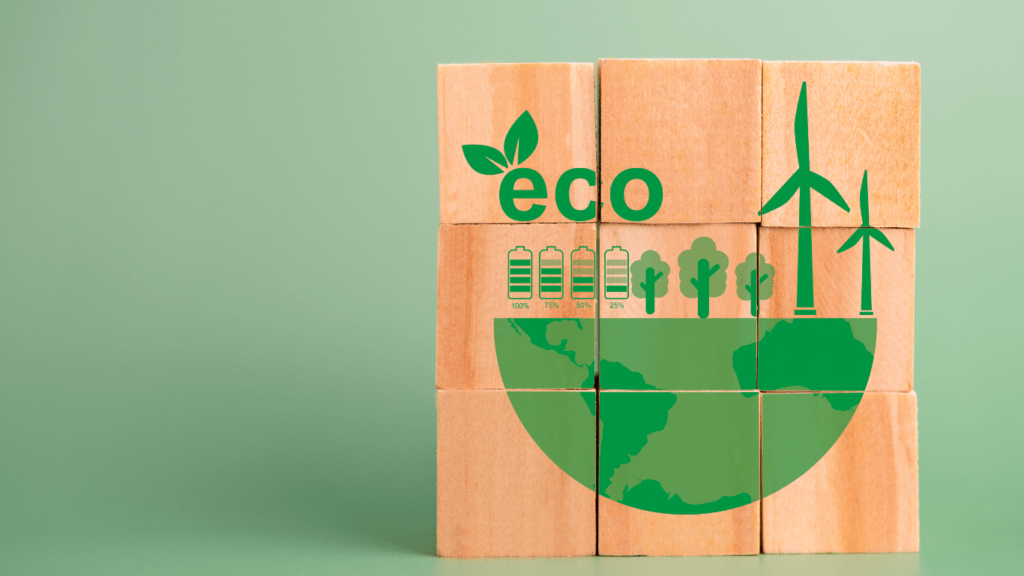What is a Green Business?
A green business integrates sustainable practices into its operations. It prioritizes reducing environmental impact and promoting eco-friendly initiatives. These businesses adopt renewable energy sources like solar and wind, minimize waste through recycling, and utilize sustainable materials in production. By doing so, they aim to lower their carbon footprint.
Green businesses also emphasize social responsibility. They engage in fair trade, ensure ethical labor practices, and support community development. Some example companies include Patagonia and Seventh Generation, known for their commitment to the environment and social ethics.
Compliance with environmental regulations is essential. Many green businesses exceed legal requirements, adopting international standards like ISO 14001 for environmental management. This certification demonstrates a company’s dedication to minimizing its environmental footprint.
Adopting green strategies benefits businesses financially. Sustainable practices can reduce operating costs, enhance brand reputation, and attract eco-conscious consumers. For instance, by using energy-efficient lighting, companies save on electricity bills.
A green business combines environmental sustainability, social responsibility, and economic viability, setting examples in various industries.
Why Companies Are Going Sustainable
Sustainability’s growing importance is driven by various factors compelling companies to adopt green practices. Let’s explore the key reasons behind this shift.
Consumer Demand
Eco-conscious consumers now expect businesses to adopt sustainable practices. They prefer to purchase from brands that prioritize environmental responsibility. According to a Nielsen study, 66% of global consumers are willing to pay more for sustainable products. This consumer demand pushes companies to innovate and differentiate themselves through sustainability to retain and attract customers.
Regulatory Pressures
Governments worldwide are implementing stricter environmental regulations, compelling businesses to go green. These regulations aim to reduce carbon emissions, manage waste, and promote renewable energy. Adhering to laws like the Paris Agreement or local environmental standards ensures legal compliance and avoids penalties. By embracing sustainability early, companies can stay ahead of regulations and mitigate risks.
Financial Incentives
Going green offers significant financial benefits. Companies can lower operating costs through energy efficiency and waste reduction. McKinsey reports that green initiatives reduce costs by up to 20%. Additionally, sustainable practices boost brand reputation and attract investment. Eco-friendly companies often enjoy government grants and tax incentives, further enhancing financial viability.
Key Strategies for Greening a Business
Adopting green strategies can significantly reduce a company’s environmental impact. Several key practices stand out as essential for achieving sustainability.
Energy Efficiency
Improving energy efficiency lowers operational costs and carbon emissions. Companies often invest in energy-efficient appliances, lighting, and HVAC systems. Upgrading to LED lighting, for example, can reduce energy use by up to 75%. Smart building technologies that optimize energy consumption based on real-time data further enhance efficiency. Implementing energy audits helps identify areas for improvement and track progress.
Sustainable Sourcing
Sourcing materials sustainably minimizes environmental harm and supports eco-friendly suppliers. Businesses commit to using raw materials from certified sustainable sources like FSC-certified wood or organic cotton. Collaborating with suppliers who adhere to ethical practices ensures that the entire supply chain supports sustainability. For instance, companies like IKEA source 98% of their wood from sustainable foresters, demonstrating a strong commitment to green practices.
Waste Reduction
Reducing waste involves reusing, recycling, and cutting down on unnecessary materials. Companies like Zero Waste Box by TerraCycle provide solutions for recycling hard-to-recycle items. Implementing a circular economy model ensures products are designed for longevity and recyclability. Additionally, businesses can reduce waste through composting organic materials and minimizing packaging. Patagonia, known for its durable and repairable products, exemplifies effective waste reduction.
Water Conservation
Conserving water protects a critical natural resource and reduces costs. Installing low-flow fixtures and water-efficient appliances significantly lowers consumption. Monitoring water use through smart meters helps identify inefficiencies and leaks. Additionally, companies can implement rainwater harvesting systems to utilize captured water for landscaping and non-potable purposes. Coca-Cola’s water replenishment projects aim to return an equivalent amount of water used in its products to local communities, demonstrating proactive water management.
Implementing these key strategies fosters a sustainable business model, ensuring environmental responsibility and economic benefits.
Case Studies of Successful Green Businesses

Exploring successful green businesses provides valuable insights into effective sustainability practices. Here are three exemplary companies making significant strides.
Example 1: Patagonia
Patagonia, an outdoor clothing company, is renowned for its dedication to environmental responsibility. They use recycled materials like polyester and organic cotton in their products. Their “Worn Wear” initiative encourages customers to repair, trade, or recycle old gear, reducing overall waste. Patagonia also donates 1% of sales to grassroots environmental groups through the “1% for the Planet” initiative, illustrating a comprehensive approach to sustainability and community support.
Example 2: IKEA
IKEA, the global furniture retailer, has integrated sustainability into its core operations. They source wood from responsibly managed forests, certified by the Forest Stewardship Council (FSC). IKEA invests in renewable energy, with the company owning wind farms and solar panels that generated renewable energy equivalent to 73% of its total operational needs in 2020. Additionally, IKEA’s circular products and services enable repurposing, repairing, and recycling, setting a benchmark for sustainable production and consumption.
Example 3: Tesla
Tesla, the electric vehicle (EV) manufacturer, is a leader in advancing sustainable transportation. Their EVs produce zero tailpipe emissions, significantly reducing air pollution compared to traditional gasoline vehicles. Tesla’s energy products, like solar panels and Powerwall batteries, further contribute to sustainable living by enabling consumers to generate and store renewable energy. Tesla’s Gigafactories, which aim to produce EV batteries more efficiently, represent a commitment to reducing manufacturing’s environmental impact.
These companies exemplify how integrating sustainability can drive innovation, reduce environmental impact, and create economic opportunities.
Challenges and Opportunities in Green Business
Green businesses face unique challenges but also find substantial opportunities for innovation and growth.
Overcoming Initial Costs
Initial costs in green business can be high. Investments in energy-efficient technology, renewable energy sources, and sustainable materials demand significant upfront capital. For example, replacing traditional manufacturing equipment with eco-friendly alternatives can strain budgets. Financial obstacles often deter small businesses from adopting green practices. However, overcoming these initial costs can be achieved through incentives like:
- tax credits
- grants
- government subsidies
Navigating Regulatory Landscapes
Regulatory landscapes present both challenges and opportunities for green businesses. Navigating these landscapes means staying compliant with national and international environmental regulations. For instance, businesses must often align with standards like ISO 14001 to achieve certification and demonstrate their commitment to sustainable practices. Non-compliance risks costly fines and damage to reputation, but adherence can open new markets and attract eco-conscious consumers.
Leveraging Technology
Technology serves as a critical enabler for green businesses, presenting both challenges and opportunities. Adopting new technologies such as energy management systems and sustainable supply chain software can streamline operations and reduce environmental impact. However, implementing these technologies requires expertise and investment. Successful integration can significantly lower costs and enhance efficiency. For example, smart grids and IoT devices optimize resource use, leading to substantial savings and sustainability.
Future Trends in Green Business
- Advancements in Renewable Energy Technologies
Businesses are rapidly adopting renewable energy technologies like solar, wind, and hydropower. These sources reduce dependency on fossil fuels and lower carbon footprints. For instance, tech companies like Apple and Google are investing heavily in renewable energy projects to power their data centers.
- Circular Economy Models
The circular economy model is gaining traction. This approach focuses on reducing waste by reusing and recycling materials. Companies like Philips and Unilever are designing products with longer lifespans and repurposing materials to minimize waste.
- Green Financing and Investment
Green bonds and sustainable investment funds are on the rise. Financial institutions and investors are increasingly directing capital toward environmentally friendly projects. The Green Bond Market saw over $270 billion in issuances in 2020, indicating significant growth.
- Sustainability Reporting and Transparency
More companies are adopting comprehensive sustainability reporting practices. These reports detail environmental impact, social responsibility, and governance metrics. Organizations such as the Global Reporting Initiative (GRI) offer frameworks guiding businesses on creating transparent and detailed reports.
- Innovations in Sustainable Packaging
Single-use plastic reductions are leading to innovations in sustainable packaging. Companies like Nestlé and PepsiCo are exploring biodegradable materials and reusable packaging solutions. Expect to see more products using eco-friendly packaging in the coming years.
- Corporate Sustainability Goals
Businesses are setting ambitious sustainability targets. Companies like Microsoft aim to be carbon negative by 2030, while others are committing to net-zero emissions. These goals showcase a dedication to long-term environmental impact reduction.
- Smart and Sustainable Cities
The concept of smart cities integrates green business practices within urban planning. This includes energy-efficient buildings, sustainable transportation systems, and green public spaces. Innovations in IoT and smart grids are crucial in developing these eco-friendly urban areas.
- Employee and Consumer Engagement
Companies are actively engaging employees and consumers in their sustainability initiatives. Programs encouraging employee participation in green practices, coupled with marketing efforts targeting eco-conscious consumers, are becoming standard. For example, initiatives like REI’s employee engagement programs foster a culture of sustainability within the organization.
These trends illustrate the dynamic nature of green business and highlight the innovative strategies companies are employing to create a sustainable future.



